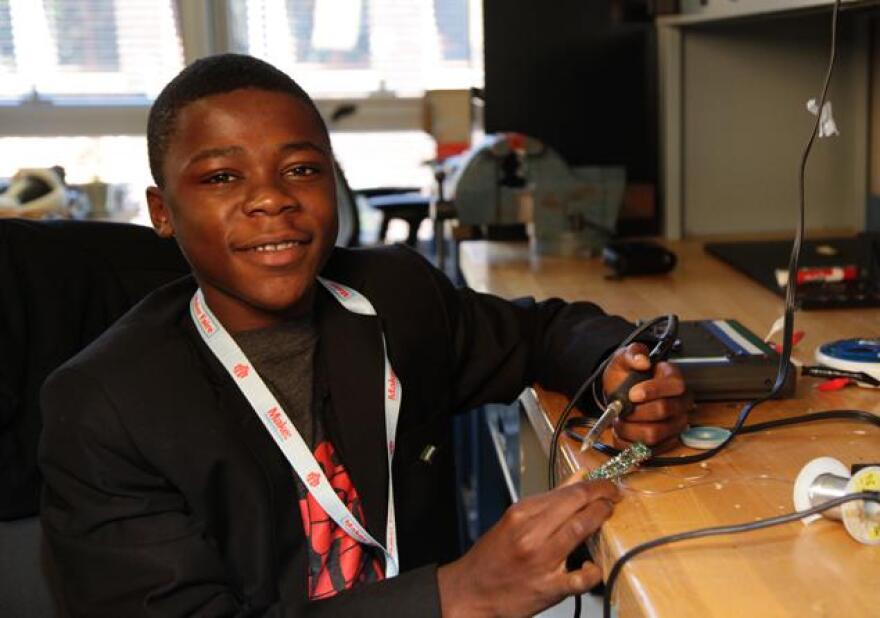The Consumer Electronics Show (CES) started this week in Las Vegas. For people addicted to tech and gadgets, it's the mothership of invention. There's a lot of innovation at CES, as well as a lot of junk that will make this year's "2014 Technology Flops" lists come December.
But that innovation comes from the minds of real people, or inventors. How can we "grow" inventors? Can innovation be taught? What are the conditions that could help a child explore and grow up to be someone who innovates or invents things? Does it require tons of money and the latest tech tools?
You've probably heard of Caine Monroy and his arcade. In 2011, Caine built an arcade out of mostly cardboard in his dad's auto parts store. He charged $1 admission for four game plays, and also sold a $2 fun pass that allowed customers even more plays. Admittedly, Caine lucked out that his first customer was a filmmaker who was so impressed with Caine's creativity that he proposed making a short film about the arcade. About 8 million Vimeo and YouTube views later, Caine's Arcade inspires kids and adults alike to get out there and make something.
Caine's Arcade from Nirvan Mullick on Vimeo.
All of the attention and buzz around Caine's Arcade resulted in not only good things for Caine---speaking engagements, a sizable scholarship fund, tons of visitors to his arcade---but also spawned the Imagination Foundation. Following Caine's lead, the foundation hopes to, "engage 1 million kids in 70 countries in creative play through [their] Global Cardboard Challenge."
Caine's story might be old news---he, in fact, outgrew it and has moved on to other entrepreneurship projects---but it never hurts to remember that child's play can lead to great things. And, sure, educational toys are stimulating, but they can also be expensive. Parents and teachers lacking the cash to buy those things might be better off taking a lead from the kids: what kinds of games do they make up? How can kids be helped along in turning their imaginary worlds into something real?
How many times have you marveled that your kid seems more interested in the cardboard box that a toy came in than in the toy itself? The creativity that kids show when given few resources seems like a good reminder that invention can start in more humble beginnings.
Everything that kids do doesn't need to become a viral YouTube sensation. While the tech companies and entrepreneurs are scrambling for media attention in Vegas, here's hoping that the next great kid-inventor out there is busy crafting, making up songs, building structures out of castoff materials, or enjoying a pinball machine made out of corrugated cardboard.





